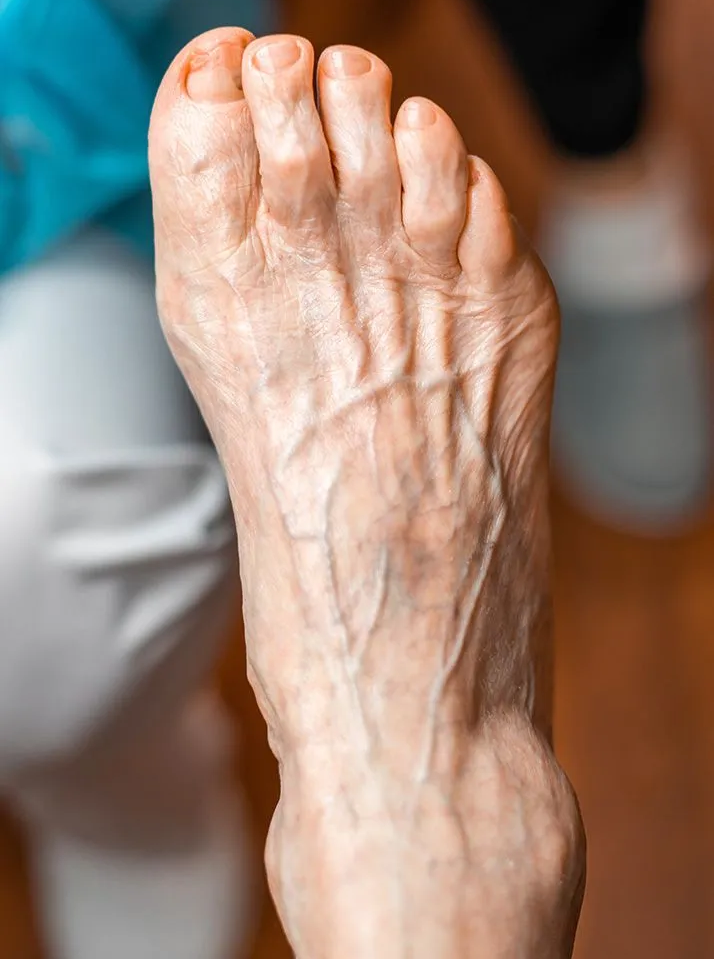Diabetic Foot Care

Comprehensive Diabetic Foot Care
Protecting Foot Health for Patients Living With Diabetes
Diabetes can have a serious impact on foot health, making patients more vulnerable to a variety of complications. Elevated blood sugar over time may damage nerves and blood vessels, reducing both sensation and circulation in the feet. This combination increases the risk of numbness, tingling, burning, or painful sensations, a condition known as diabetic neuropathy. When feeling in the feet is diminished, even minor issues such as blisters, cuts, or pressure spots may go unnoticed. Poor circulation can further delay the body’s natural healing process, allowing small wounds to progress into infections or ulcers. Left untreated, these complications can threaten long-term mobility, overall health, and in severe cases may lead to hospitalization. Regular foot monitoring and professional care are essential to protecting foot health for anyone living with diabetes.
Common Complications
Patients with diabetes are more likely to experience:
- Nerve damage (neuropathy) that causes numbness, tingling, or burning
- Reduced circulation that slows healing and increases infection risk
- Foot ulcers that may not heal properly
- Skin changes, including dryness, cracks, or calluses
- Increased risk of fungal infections or ingrown toenails
Daily Foot Care Tips
Proper self-care can greatly reduce complications. Important steps include:
- Check feet daily for cuts, blisters, swelling, or redness
- Wash and dry feet thoroughly, using lukewarm water
- Moisturize dry skin (avoiding the spaces between toes)
- Trim toenails straight across to prevent ingrown nails
- Wear well-fitted shoes and cushioned socks designed for diabetic feet
- Avoid walking barefoot, even at home
- Not attempt to treat corns or calluses without professional guidance
Warning Signs to Watch For
Seek immediate care if you notice:
- A cut, blister, or sore that does not begin to heal within a few days
- Redness, swelling, or unusual warmth in the foot
- A callus with dried blood inside
- Discoloration, foul odor, or signs of infection
Professional Care and Prevention
Regular podiatric visits are an important part of diabetes management. A podiatrist can identify issues early, provide professional treatment for corns, calluses, or toenail problems, and offer custom orthotics or footwear to reduce pressure points. Preventive care helps protect against serious complications and supports long-term mobility and quality of life.
Start Your Journey to Wellness Today
Talk With Foot and Ankle Specialist Today!
If you are living with diabetes, proactive foot care is essential. Schedule an appointment with our team to learn how we can help you manage risks, treat problems early, and protect your foot health for the future.

